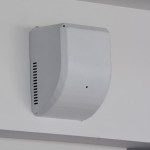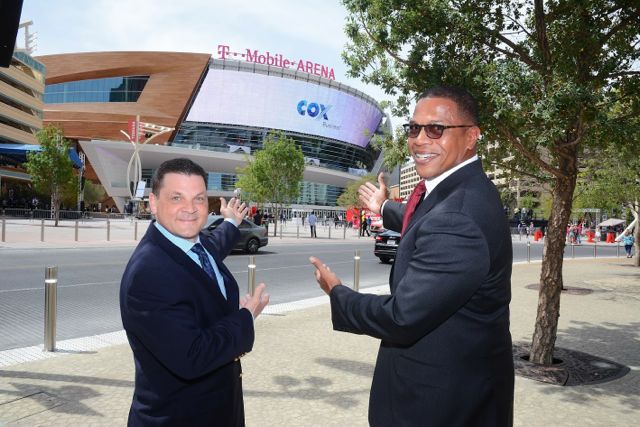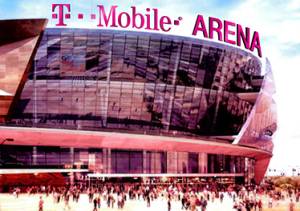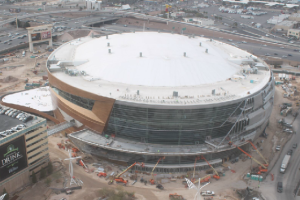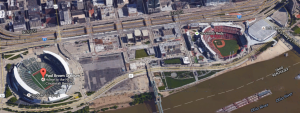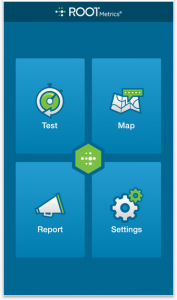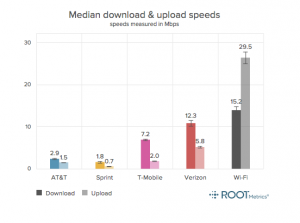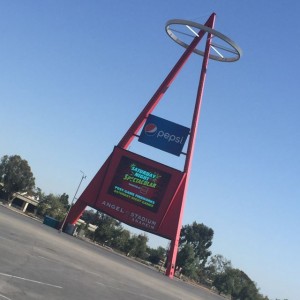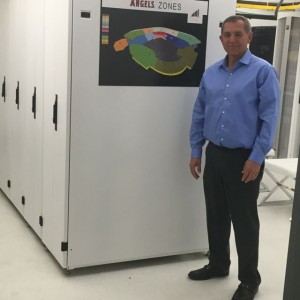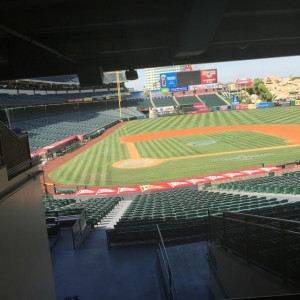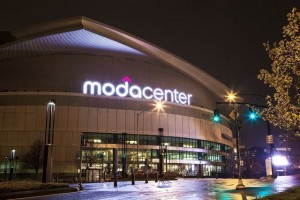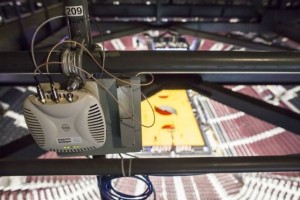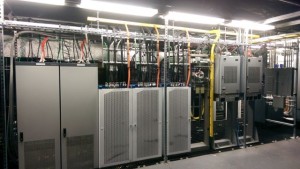
T-Mobile Arena, Las Vegas, on the official April 6 opening. All photos: Cox Business (click on any photo for a larger image)
With no deal announced for either league it’s an open-ended question. For now, the 20,000-seat venue, located just west of the strip near the New York New York hotel/casino (right next to the freeway) will have to be satisfied hosting all kinds of events from concerts to one-off sports events like the Harlem Globetrotters (April 19) and a WWE event in June. Fans at any event will be able to use free Wi-Fi provided by Cox Business, which is the “exclusive Technology Integration/Telecommunications Services Provider,” according to a press release from the official opening ceremonies.
While we haven’t visited the arena yet — we are looking forward to a hosted tour during this summer’s SEAT Conference in July — the $375 million multi-purpose venue, owned by a joint venture between AEG and MGM Resorts International, looks pretty cool with its overhanging lounges and outdoor plaza with real, live trees, a rarity on the strip. Inside, the tech underpinnings sound state of the art, beginning with a 10-Gigabit fiber optic network that serves as the arena’s backbone.
Special shrouds for the Wi-Fi APs
According to figures provided to us by Cox Business folks, the 565 Wi-FI APs include a mix of indoor and outdoor models from Cisco, some designed for office-type settings and some designed to withstand outdoor temperatures and weather. According to Cox its on-site engineers also designed a “vanity cover” type of shroud, which is more aesthetically pleasing to the eye while also helping keep the AP safe from “disruptions,” like possibly being bumped or some other physical intrusion.The arena will also use Cisco’s StadiumVision system to provide synchronized content feeds to the 767 4K-capable digital displays throughout the venue. Thanks to the Cox sponsorship, that content could include “all 60 channels of high-definition news, sports and entertainment content from the Cox cable channel lineup as well as live in-house feeds from the arena,” according to Cox.
We have also heard reports, but have not confirmed with the company, that Mobilitie will be providing the in-venue DAS. Mobilitie’s involvement is not a big surprise, given that the company partnered with MGM in the past to bring Wi-Fi to the resort company’s casinos. Back when the T-Mobile naming sponsorship was announced, there were reports of special discounts and VIP access for T-Mobile customers, but so far none of that information was easily discovered on the arena’s website. Stay tuned for more updates as we get them on the DAS/cellular side of things; anyone who visits the arena soon should take a speedtest and post the results here in the comments.
